













The Placebo Effect and
Neal S. Meritz, MD
People
Rajam Ramamurthy,
Innovation
Edwin Davila, DO, MS, CISSN and Winona Gbedey
Body
Diabetic
The

Promoting
Hiers,
San Antonio Medicine is the official publication of Bexar County Medical Society (BCMS). All ex pressions of opinions and statements of sup posed facts are published on the authority of the writer, and cannot be regarded as expressing the views of BCMS. Advertisements do not imply sponsorship of or endorsement by BCMS
EditoriAl CorrESpondEnCE: Bexar County Medical Society 4334 n loop 1604 W, Ste. 200 San Antonio, tX 78249 Email: editor@bcms.org
MAGAZinE AddrESS CHAnGES: Call (210) 301-4391 or Email: membership@bcms.org
SuBSCription rAtES: $30 per year or $4 per individual issue
AdvErtiSinG CorrESpondEnCE: louis doucette, president traveling Blender, llC. A publication Management Firm 10036 Saxet, Boerne, tX 78006 www.travelingblender.com
For advertising rates and information Call (210) 410-0014 Email: louis@travelingblender.com
SAN ANTONIO MEDICINE is published by SmithPrint, Inc. (Publisher) on behalf of the Bexar County Medical Society (BCMS). Reproduction in any manner in whole or part is pro hibited without the express written consent of Bexar County Medical Society. Material contained herein does not necessarily reflect the opinion of BCMS, its members, or its staff. SAN AN TONIO MEDICINE the Publisher and BCMS reserves the right to edit all material for clarity and space and assumes no re sponsibility for accuracy, errors or omissions. San Antonio Med icine does not knowingly accept false or misleading advertisements or editorial nor does the Publisher or BCMS as sume responsibility should such advertising or editorial appear. Articles and photos are welcome and may be submitted to our office to be used subject to the discretion and review of the Publisher and BCMS. All real estate advertising is subject to the Federal Fair Housing Act of 1968, which makes it illegal to ad vertise “any preference limitation or discrimination based on race, color, religion, sex, handicap, familial status or national orgin, or an intention to make such preference limitation or dis crimination.
PuBLISHED BY: traveling Blender, llC. 10036 Saxet Boerne, tX 78006
PuBLISHER louis doucette louis@travelingblender.com
BuSINESS MANAGER: vicki Schroder vicki@travelingblender.com
ADvERTISING SALES: AuSTIN: Sandy Weatherford sandy@travelingblender.com
SAN ANToNIo: Gerry lair gerrylair@yahoo.com
PRojECT CooRDINAToR: denise tapia denise@smithprint.net

For more information on advertising in San Antonio Medicine, Call Traveling Blender at 210.410.0014 in San Antonio and 512.385.4663 in Austin.
SmithPrint, Inc. is a family owned and operated San Antonio based printing and pub lishing company that has been in business since 1995. We are specialists in turn-key operations and offer our clients a wide variety of capabilities to ensure their projects are printed and delivered on schedule while consistently exceeding their quality expectations. We bring this work ethic and commitment to customers along with our personal service and attention to our clients’ printing and marketing needs to San Antonio Medicine mag azine with each issue.
Copyright © 2022 Smithprint, inc. prin tE d in tHE u SA

rajeev Suri, Md, President
Brent W. Sanderlin, do, Vice President
Ezequiel “Zeke” Silva iii, Md, Treasurer
Alice Gong, Md, Secretary
John J. nava, Md, President-elect
rodolfo “rudy’ Molina, Md, Immediate Past President
vincent Fonseca, Md, MpH, Member
Woodson "Scott" Jones, Md, Member
lubna naeem, Md, Member
lyssa n ochoa, Md, Member
Jennifer r rushton, Md, Member
raul Santoscoy, do, Member
John Shepherd, Md, Member
Amar Sunkari, Md, Member
lauren tarbox, Member
Col. tim Switaj, Md, Military Representative Manuel M. Quinones Jr., Md, Board of Ethics Chair
George F. “rick” Evans, General Counsel
Jayesh B. Shah, Md, TMA Board of Trustees
Melody newsom, CEO/Executive Director taylor Frantz, Alliance Representative
ramon S. Cancino, Md, Medical School Representative
lori Kels, Md, Medical School Representative
ronald rodriguez, Md, phd, Medical School Representative Carlos Alberto rosende, Md, Medical School Representative
Melody newsom, CEO/Executive Director Monica Jones, Chief Operating Officer Yvonne nino, Controller
Mary nava, Chief Government Affairs Officer
Brissa vela, Membership Director phil Hornbeak, Auto Program Director August trevino, Development Director Betty Fernandez, BCVI Director
Al ortiz, Chief Information Officer
John Joseph Seidenfeld, Md, Chair
Kristy Yvonne Kosub, Md, Member
louis doucette, Consultant
Alan preston, phd, Member
rajam S. ramamurthy, Md, Member
Adam v ratner, Md, Member
david Schulz, Community Member
Faraz Yousefian, do, Member
neal Meritz, Md, Member
Jaime pankowsky, Md, Member
Moses Alfaro, Student Member
Winona Gbedey, Student Member tue Felix nguyen, Student Member
Cara J. Schachter, Student Member niva Shrestha, Student Member nancy Salas, Editor
Any physician who has gone through the woes of prior authoriza tion can vouch for the fact how much time, money, resources and stress that whole process involves. Physicians only want to ensure that patients can get the treatment they need when they need it, but these administrative hassles do add undue burden (16 hours per week lost per a recent survey) and have negative outcomes for patients re lated to delayed care (34% adverse events, 24% patient hospitaliza tion, 8% patient disability). Just in case our physicians were not aware, BCMS, TMA and AMA have lobbied hard to make this a thing of the past with the “Gold Card Act”.
H.B. 3459 commonly referred to as the Texas Gold Card Act, was passed as a law in Texas to establish continuous prior authorization exemption for physicians who earn 90% approval rate on prior au thorization requests for a given service over a period of six months. So strong was the bipartisan support rallied by TMA, that the legis lation passed the House by a vote of 140-4 and the Senate unani mously. The bill was signed into law on September 1, 2021, and after the rule making process, certain provisions of the “Texas Gold Card Act” started taking effect beginning October 1, 2022.
The law applies to Texas in-network physicians and providers serv ing fully insured commercial businesses in the individual, smaller and large group markets. Under this law, payors will analyze approval rates for at least five prior authorization requests for a service sub mitted by providers between January 1, 2022 and June 30, 2022. If providers have a 90% or greater final approval rate for those requests for a service, they are exempt from requesting prior authorizations for those services. If the approval rate for a service is below the 90% threshold, providers must keep submitting prior authorization re quests for that service.
Per one of the insurance websites (United Healthcare), starting October, providers will get a notice telling them services for which they have an exemption or that they didn’t qualify for an exemption. Once approved, providers will not be required to submit prior au thorization requests for gold carded services, and payors will pay claims without requiring the prior authorization. Exemptions are open-ended if providers comply with plan medical policies. Payors will review services every 6 months to check compliance. If the re
view shows approval rate would have dropped below 90% for the specific service, payors could rescind the exemption. After each 6month review period, new providers and/or new services for existing providers will be added or removed based on the results.
The concept of prior authorization gold card is not new. In 2019, Virginia became the first state to pass a gold card law. This concept was developed by AMA and included in its “Prior Authorization and Utilization Management Reform Principles.” A bipartisan bill (H.R. 7995) supported by AMA, similar to the Texas Gold Card Bill is being reviewed in the US House of Representatives for exempting physicians from prior authorization requirements for Medicare Ad vantage plans (including items and services) as long as 90% of provider’s requests were approved.
The challenge going forward is the implementation process, to en sure that we continue to meet 90% approval rate benchmarks and that pharmacy benefit/payor denials do not increase keeping physi cians below the 90% threshold. This legislation again proves that when we as physicians speak with one voice, we are heard and we can make a difference in the lives of the patients we care for.
1. “Gold card” approach to prior authorization introduced in Con gress | American Medical Association (ama-assn.org)
2. Psotka MA, Singletary EA, Bleser WK, et al. Streamlining and Reimagining Prior Authorization Under Value-Based Contracts: A Call to Action From the Value in Healthcare Initiative’s Prior Authorization Learning Collaborative. Circ Cardiovasc Qual Outcomes. 2020;13(7):e006564. doi:10.1161/CIRCOUT COMES.120.006564.
3. Sharma SP, Russo A, Deering T, Fisher J, Lakkireddy D. Prior Au thorization. JACC: Clinical Electrophysiology. 2020;6(6):747750. doi:10.1016/j.jacep.2020.04.022.
Rajeev Suri, MD, MBA, FACR is the 2022 President of the Bexar County Medical Society, Tenured Professor and Interim Chair of the Department Radiology at UT Health San Antonio and Chief of Staff at University Hospital San Antonio.
We have all experienced the loss of a loved one. Many physicians have experienced many losses of other people’s loved ones during their tenure as a physician. Despite the number of deaths we have experi enced, various polls and research show that more than 51% of people do not have a will or any other estate plan in preparation for their death. Some polls show that roughly only 14% of people in their 30s, the age many physicians become an attending, have a will or other es tate plan in place. Interestingly, physicians know better than anyone that death is inevitable.
If Covid taught us anything, it taught us that death does not dis criminate. There have been over 90,000 deaths in Texas due to Covid. If half of those people died without a will, that left nearly 45,000 fam ilies scrambling to figure out the wishes of their deceased family mem ber, who may have died suddenly and without much warning.
Some of us believe that if we die, our spouse will inherit all our be longings and property, which is not necessarily accurate. Some of us would rather not face the thought of our own death or the issues that can possibly follow death. However, if we don’t have some estate plan, we leave our loved ones to pick up many pieces alone.
It is not required to have a will in Texas. However, if you die with out a will (intestate) or without some type of estate plan, your assets that you spent years of medical training working to earn, will be di vided according to state law, not according to your directions, no mat ter how much you have. However, assets that have valid beneficiary designations - e.g., life insurance policies - are different, and typically go directly to that beneficiary.
Here is one example of an issue that can arise if a physician dies without a will.

• Example: A physician gets remarried and purchases a $1 million home with his second wife who is pregnant with her first baby. The physician also has two children from his first wife. The physi cian dies without a will or other estate plan. Does the second wife inherit the home she purchased with her physician husband?
• Answer: It is very possible that the second wife does not fully in herit the home she purchased with her physician husband. The answer will depend.
Physicians do not have a lot of spare time. Physicians are busy, they may have children, their children may have many activities, work is hectic, etc., etc. But, if physicians do not have time to plan their estate plan or prepare a will now, physicians definitely will not have time to make an estate plan when they die. Then, their family will be stuck planning for the physician’s death while also grieving for their loved one. So please, make time to plan for your future and to protect your family and the assets you have worked so hard to obtain.
Lisa Uresti Dasher, Attorney at Law, is a member of the BCMS Al liance.
Disclaimer: This article is not legal advice. Seek the help of a lawyer for any legal issues.
he placebo effect has been regarded as a potent yet mysterious force, an entity that can mimic powerful drugs, yet relies on tricking patients. If it makes a patient feel better, is it wrong to deceive?
The medical literature is consistent over many decades in confirming decided improvement and therapeutic effectiveness of placebos in ap proximately one-third of all patients.
Physiologically inactive treatments have been utilized frequently throughout the history of medicine, and until only recently medical treatment has been primarily the history of the placebo effect. Placebos can be tablets, injections, surgeries, or procedures that themselves would not be expected to influence a patient’s condition, symptoms, illness, or pain. And yet, placebos are able to alter the patient’s perception of the disorder.
Any medical intervention or health care interaction can involve placebo effects. Placebos given by subcutaneous injection have signifi cantly greater effectiveness than placebos given orally. A large pill works better than a small one. Placebos have a considerable effect on pain and on illnesses manifested by stress. The suggestion that a negative outcome will result from a placebo is called the nocebo effect. If a patient is told that a non-active placebo will cause a serious side effect, that patient is pretty likely to experience that adverse reaction.

Placebos and nocebos have frequently been utilized in routine med ical practice by honorable practitioners. A placebo acts via a psycholog ical mechanism as an aid to therapeutic suggestion, but the outcome it produces may be either psychological or physical.
The placebo effect in large part explains why Alternative, or Comple mentary, or Non-Traditional Medicine is thought to be beneficial. In tegrative Medicine purportedly combines alternative and traditional therapies thus providing the best of both approaches. But this is merely a smokescreen behind which enthusiasts of dubious practices try to in
corporate their unproven methods into routine health care. They use anecdotes and testimonials to provide placebo treatments and political maneuvering to keep regulatory agencies at bay.
Many proponents of Integrative Medicine advocate this without mis leading intentions, but the damage may well be equivalent. The evidence for complementary therapies is often lacking but they continue to be sold as promising solutions to the problems of real medicine. When a patient feels better after having used a product or procedure, it is natural to credit whatever was done. The fact that the alternative method may exert a placebo effect that relieves symptoms is not sufficient reason to justify its use. Cause and effect is elusive.
The placebo effect remains an important way in which patient out comes can be improved. Bedside manner and caring presence have long been promoted as important in health care. What sets Alternative Med icine apart is that it has not been scientifically tested and its advocates largely denies the need for such testing. The burden of proof must be
borne by those who make the claims. It is their responsibility to conduct suitable studies and to report them in sufficient detail. Usually, these studies are not performed because Big Pharma is unwilling to bear the cost. Drug companies refuse to pursue treatments that are low profit and generally available.

Alternative Medicine and Evidence-based Medicine are mutually ex clusive. People who choose Integrative Medicine think that they are uti lizing a safe effective treatment, but they are often deceived. The placebo effect may be an important factor in regular medicine, but it is the most important principle of Alternative Medicine. There exists a reasonable argument that there is no Integrative Medicine, only scientifically proven, evidence-based medicine.
Peters, Sabine. Alternative Medicine and the Placebo Effect. Child snd Adolescent / Developmental Psychology 3/24/14
O’Mathuna, Donal P. The Placebo Effect and Alternative Therapies. Altern Med Alert 2003;6(6):61-69. 6/1/03
Gavura, Scott. So-Called Alternative Medicine. Science-Based Medicine. 6/14/18
Barrett, Stephen. Be Wary of “Alternative,” “Complementary,” and “Integrative” Healthy Methods. Quackwatch 4/17/22
Meritz, Neal. Integrative Medicine. San Antonio Medicine August, 2021 Vol 74 No 8 Jarry, Jonathan. Beware the Trojan horse of Integrative Medicine. McGill University Office for Science and Society Newsletter. 10/29/20
McCartney, Margaret. The Scam of Integrative Medicine. BMJ 2011;343:d4446
Neal S. Meritz is a retired Family Practice Physician, Gradu ated from the University of Texas Medical School at San Antonio in 1972. He is a member of the Bexar County Medical Society.








ardiovascular disease (CVD) is the number one killer in the general population. People of South Asian ancestry (India, Bangladesh, Bhutan, the Maldives, Nepal, Pakistan and Sri Lanka), are one of the fastest growing populations in the U.S. They are at an even higher risk of CVD compared to other racial and ethnic groups. To probe into this, in 2010, Alka Kanaya, MD, Professor of Medicine, Epidemiology and Biostatistics at the University of Califor nia, San Francisco, in collaboration with Namratha Kandula, MD, MPH, a Professor of Medicine and Preventive Medicine at Northwest ern University, launched a prospective cohort study titled the “MASALA” (Mediators of Atherosclerosis in South Asians Living in America). The word masala roughly translates to “a mixture of spices” identified with south Asian cuisine.
Shweta Bansal, MD, Professor of Medicine at the University of Texas Health, chaired the CME program committee for the 40th annual AAPI convention held in San Antonio, Texas in June 2022 and invited Dr. Kanaya to address the MASALA study. Rajam Ramamurthy, MD interviewed Dr. Bansal, MD to shed some light on the burning issue (No pun intended) of high CVD risk in South Asians, exclusively for this issue of San Antonio Medicine magazine.
Dr. Ramamurthy: Based on your recent conversations with Dr. Kanaya and your extensive work with Cardiometabolic disorders, what is the status of CVD in South Asians?
Dr. Bansal: South Asians represent approximately 25% of the world's population – yet they account for 60% of the world's heart dis ease patients. In a large UK Biobank prospective cohort study, approx imately 8,000 middle-aged South Asian participants free of atherosclerotic cardiovascular disease at the time of enrollment, while receiving contemporary medical care experienced a CVD event at over a twofold higher rate compared to participants with European ancestry over a follow-up of 11 years.1
Dr. Ramamurthy: Indeed, a very high rate. What has been identi fied in the MASALA study or UK Biobank cohort as risk factors that South Asian groups have for CVD?
Dr. Bansal: We have learned that South Asians have excess metabolic perturbations and cardiovascular risk factors at a lower value of body mass index (BMI) as compared to white populations. The prevalence of type 2 diabetes (T2DM) was 27% in South Asians compared with 8.0% in non-Hispanic white individuals after adjustment for age, sex and BMI in a recent US study.2 This prevalence was similar in South Asians resid ing in Ontario, Canada.3 The MASALA study found that South Asians developed T2DM at an average of nine years earlier than white partici pants, and at an average BMI of 24 kg/m2 compared with a BMI of 30 kg/m2 for an equivalent incidence rate in white people.4 In the UK Biobank study, hypertension, diabetes and central adiposity accounted for most of the CVD risks in South Asians compared to Europeans.1
Dr. Ramamurthy: Does the MASALA study shed any light on the reasoning behind this disproportionately higher rate of T2DM and other risk factors?
Dr. Bansal: In the MASALA study, investigators found that South Asian people seem to have more fat deposited in organs like the liver, heart, muscle tissue and around the abdominal visceral organs, as com pared to people from US racial and ethnic groups in the MESA (Mul tiethnic Study of Atherosclerosis) study who deposit fat under their skin.5 Ectopic and visceral fat has long been linked with an exaggerated inflammatory state and insulin resistance that leads to increased meta bolic risks and overall mortality.6,7 In the MASALA study, hepatic and visceral fat were independently associated with both incidental and progressive diabetes.
MASALA investigators discuss diet as an important risk factor. They found three major types of dietary patterns that MASALA participants are consuming. One is a Western diet with more animal fats, proteins, meat and alcohol. A second dietary pattern is vegetarian, but too many high-fat dairy types of dishes, sugar and refined carbohydrates, a tradi tional South Asian diet. And the third pattern, is a more prudent diet with whole grains, nuts, fruits and vegetables. Of these three dietary pat terns, the first two patterns are associated with a higher risk of visceral fat and diabetes.8 An additional factor is physical activity, participants in MASALA study had significantly lower metabolic equivalent tasks as compared to MESA study participants of other US races and ethnicity.
Dr. Ramamurthy: BMI is a measure to identify folks with higher fat mass, and you said that T2DM and CVD occur at a lower BMI in South Asians. How well does the BMI capture excess ectopic and vis ceral fat in South Asians?
Dr. Bansal: Very good question. Ectopic and visceral fat does not contribute as much to the total weight as does the subcutaneous fat but exerts a much higher risk of CVD. In 2000, the World Health Organi zation (WHO) Consultative Committee opined a BMI value of ≥23 kg/m2 and ≥25 kg/m2 to denote overweight and obese, respectively in Asians.9 Subsequently, the WHO proposed that each country decide to define obesity for its population along the BMI continuum ranging from 23.0 to 27.5 kg/m2. A BMI of over 27 per meter square body sur face denotes obesity in South Asians.
Dr. Ramamurthy: What about the role of genetics and a widespread belief of small coronary arteries in South Asians?
Dr. Bansal: While cardiovascular disease can be passed down in families, researchers have yet to find a specific genetic cause that would make South Asians more at risk than other groups. In small angiogram studies, Indo-Asian patients were found to have generally smaller coro nary arteries; however, after correction for body surface area, none of these differences in size were statistically significant. Thus, the smaller coronary arteries in Indo-Asian patients were explained by body size alone and were not due to ethnic origin per se.10
Dr. Ramamurthy: If it is not clearly genetics, are there any addi tional risk factors other than diet and low exercise contributing to high ectopic and/or visceral fat, T2DM, hypertension and CVD in South Asians?
Dr. Bansal: Sure, although the genetics are not yet clear, there are few conditions that might have some genetic predisposition and dis proportionately increase the risk of CVD among South Asians. T2DM comes in different subtypes based on the clinical characteristics. The most common subtypes that South Asians have, at least from the data in MASALA, is the insulin-deficient subtype with the lowest beta cell function. This observation suggests that there are unidentified factors causing diabetes other than visceral fat because visceral fat usually as sociates with insulin resistant T2DM. Another condition with poten tial genetic predisposition is the pattern of dyslipidemia in South Asians, which is characterized by elevated levels of triglycerides and lipoprotein little ‘a’ [L p(a)], and low levels of high-density lipoprotein (HDL) cholesterol, a higher atherogenic particle burden despite com parable low-density lipoprotein cholesterol levels compared with other ethnic subgroups. HDL particles also appear to be smaller, dysfunc tional and proatherogenic in South Asians. Lp(a) is highly atherogenic and its levels are primarily genetically determined. South Asian immi grants have Lp(a) levels that are similar to those in their counterparts in their home country and higher than those in Caucasians.11 Other potential contributing factors could be related to those stress factors typically associated with immigrant populations of systemic discrimi nation, perception of biomedicine and cultural factors in South Asians.
Dr. Ramamurthy: Thank you very much for sharing these impor tant findings. Do you have some last words for our readers of the San Antonio Medicine magazine?
Dr. Bansal: Given that genetic factors can’t be changed, it is impor tant to change this risk profile which leads to excess ectopic fat deposit, one of the important links and mediators of high CVD. To identify this risk profile, awareness and early screening are the key factors. Cul turally appropriate interventions to alter deleterious dietary patterns and increased physical activity can be cornerstones to improving meta bolic risk factors in the rapidly growing and high-risk US South Asian population.
1. Patel, A.P., et al., Quantifying and Understanding the Higher Risk of Atherosclerotic Cardiovascular Disease Among South Asian In dividuals: Results From the UK Biobank Prospective Cohort Study. Circulation, 2021. 144(6): p. 410-422.
2. Cheng, Y.J., et al., Prevalence of Diabetes by Race and Ethnicity in the United States, 2011-2016. JAMA, 2019. 322(24): p. 23892398.
3. Oza-Frank, R. and K.M. Narayan, Overweight and diabetes preva lence among US immigrants. Am J Public Health, 2010. 100(4): p. 661-8.
4. Chiu, M., et al., Deriving ethnic-specific BMI cutoff points for as
sessing diabetes risk. Diabetes Care, 2011. 34(8): p. 1741-8.
5. Mongraw-Chaffin, M., et al., Relation of Ectopic Fat with Athero sclerotic Cardiovascular Disease Risk Score in South Asians Living in the United States (from the Mediators of Atherosclerosis in South Asians Living in America [MASALA] Study). Am J Cardiol, 2018. 121(3): p. 315-321.
6. Frayn, K.N., Visceral fat and insulin resistance--causative or correl ative? Br J Nutr, 2000. 83 Suppl 1: p. S71-7.
7. Liu, J., et al., Impact of abdominal visceral and subcutaneous adi pose tissue on cardiometabolic risk factors: the Jackson Heart Study. J Clin Endocrinol Metab, 2010. 95(12): p. 5419-26.
8. Gadgil, M.D., et al., Dietary patterns are associated with metabolic risk factors in South Asians living in the United States. J Nutr, 2015. 145(6): p. 1211-7.
9. The Asia-Pacific perspective : redefining obesity and its treatment. , in World Health Organization. Regional Office for the Western Pacific. 2000.
10. Lip, G.Y., et al., Do Indo-Asians have smaller coronary arteries? Postgrad Med J, 1999. 75(886): p. 463-6.
11. Bilen, O., A. Kamal, and S.S. Virani, Lipoprotein abnormalities in South Asians and its association with cardiovascular disease: Cur rent state and future directions. World J Cardiol, 2016. 8(3): p. 247-57.
Shweta Bansal, MD completed Internal Medicine Residency and Nephrology Fellowship from the University of Colorado, Denver. Currently, she is a clinical Professor of Medicine, Direc tor of the Home Dialysis Program at UT Health San Antonio, the co-di rector of the Annual Cardiorenal Connections (CRC) meeting that aims to bridge heart, kidney and metabolic disorders and a member of BCMS.
Rajam Ramamurthy, MD is Professor Emeritus of Pediatrics and Neonatology at UT Health San Antonio. She is an active member of the BCMS Publications Committee.



hen engaging in conversations with patients regarding methods of preventing the progression of debilitating disease states, the topic of weight management often comes up. Weight loss has been proven to be protective against many life-altering and threatening morbidities. Heart disease, stroke, type 2 diabetes mellitus (T2DM) and several cancers, conditions that all have been linked to obesity, are among the leading causes of preventable, premature death in this country.
Across numerous fields of research investigating these chronic con ditions, weight loss has continued to be a primary treatment modality. The 2017 ACC/AHA guidelines have championed weight loss as a core recommendation in combating hypertension. Investigations have identified a dose-response relationship with weight loss, producing ap proximately a one mmHg drop in systolic blood pressure for every kilo gram of weight loss. This finding is significant, as a reduction of systolic blood pressure by 10 mmHg has been found to provide a relative risk reduction against the development of strokes and worsening heart fail ure by 26%. From this, we can see how weight loss can provide protec tion against significant life-altering events. Similarly, research conducted by Simons et. al, which was spurred by the need to find ef fective interventions against the rise in nonalcoholic fatty liver disease, identified obesity as the most significant modifiable risk factor for in cidence of hepatocellular carcinoma and cirrhosis-related mortality. Their data strongly suggest that establishment of weight management and overall lifestyle modification could potentially prevent over 30,000 liver-related deaths in the U.S. each year. These are just a few examples of how weight loss and lifestyle modification are a keystone to the pre vention of debilitating diseases.
Irrespective of the numerous benefits that weight management pro vides, we continue to see difficulties in combating the prevalence of obesity. Recent data from the CDC indicates the prevalence of obesity has reached an all-time high of 42.4%. The number of states in which at least 35% of its residents are classified as obese has nearly doubled since 2018. This puts the current total of states at 16, with Texas among them. In Bexar County, 65.7% of adults are classified as either over weight or obese, with high obesity rates disproportionally affecting communities of color.
With these growing numbers comes a need to identify new methods to assist our patients in battling obesity. A healthy diet and regular ex
ercise are commonly touted as the mainstay of therapy for individuals struggling with weight loss; however, it is often difficult for patients to commit to these lifestyle modifications long-term. Current guidelines published by the National Institute of Diabetes and Digestive and Kid ney Diseases recommend weight loss medications for individuals with a BMI over 27 with comorbidities, such as joint pain or metabolic syn drome, or who have a BMI over 30. These medications are not meant to replace lifestyle changes, but rather serve as an adjunct to help ac celerate and facilitate the weight loss process. Orlistat (Xenical), phen termine-topiramate (Qsymia) and naltrexone-bupropion (Contrave) have served as the prototypical long-term weight loss drugs for many years. While several of these are still utilized, their long-term success has been variable.
A relative newcomer in our pharmacologic arsenal includes the GLP1 receptor agonists. Approved by the FDA in 2005, the first GLP-1 ag onist – exenatide – has been incredibly effective for the treatment of T2DM. These agents work by activating GLP-1 receptors in the pan creas, which enhance the release of insulin and reduce the release of glucagon in response in hyperglycemic states. Through similar mecha nisms in the nervous system and GI tract, they also reduce appetite, delay glucose absorption through delayed gastric emptying and increase satiety. Success in T2DM management has been noted in both the American College of Clinical Endocrinology and American Diabetes Association 2020 T2DM treatment guidelines, which recommend their use in com bination with metformin, taking the place of the previously recom mended thiazolidinediones and sulfonylureas. Continued research into this class has shined a light on the extent to which GLP-1 agonists have been shown to exert their effects throughout the body. Research has found GLP-1 receptors in the myocardium, vascular wall, adipocytes, enterocytes of the GI system − even in the brain. With these numerous mechanisms, one effect that has generated significant intrigue has been the notable weight loss patients utilizing GLP-1s have experienced. While promising, these weight loss effects were seen in patients who were both overweight and had T2DM. The STEP Trial was designed to see if similar results would be seen irrespective of T2DM. First pub lished in the March 2021 edition of the New England Journal of Medicine using the GLP-1 agonist Semaglitide, the STEP trial recruited approximately 2000 volunteers with a BMI of 30 or greater and with out diabetes, or a BMI of 27 or greater with one or more treated or un
treated coexisting condition. Participants were randomly assigned to receive once weekly Semaglitide titrated to 2.4mg or placebo. Both groups were followed for 68 weeks and provided lifestyle interventions that promoted physical activity and healthy food choices. At week 68, the group that received Semaglitide achieved an average weight loss of 15% of overall body mass while the placebo group only saw a 2.4% weight reduction. These findings were quite impressive, as the weight loss achieved with Semaglitide was 1.5 to two times greater than those averaged by the current medications on the market. Additionally, 1/3 of the participants lost at least 20% or more of overall body mass. It is no surprise that shortly after the publications of these findings, the FDA approved Semaglitide for the treatment of adults with obesity. While this approval is still very recent, coming in June 4, 2021, it has generated significant hope as a new tool for the treatment of obesity.
Further advancements were seen with the SURMOUNT-1 trial published in the July 2022 edition of the New England Journal of Med icine which continued to show the potential of these new class of agents showcasing the impact of Tirzepatide, a dual GLP-1 agonist and glu cose-dependent insulinotropic polypeptide (GIP) agonist. In this in ternational, placebo controlled, double blind, randomized controlled trial 2539 adults with BMI requirements similar to the STEP-1 trial were followed for 72 weeks. Participants were equally distributed into 4 groups, one placebo and three receiving Tirzepatide at different dosages. Results were quite significant with approximately 90% of par ticipants achieving a 5% loss in overall body mass and 30% of partici pants losing 25% of body mass or more. While this trial is still fairly new, it highlights the growing interest in these novel agents and the potential they have in the treatment of obesity.
As we continue to investigate new methods for the treatment of obe sity, we must also continue to advance our own understanding of the disease itself and the message we hope to convey to our patients. Our approach must be focused on treating obesity as a chronic condition and not minimizing it to simply a battle of will power. Research shows that obesity is characterized by disruption in weight-regulating hor mones, such as leptin, ghrelin and GIP, that hinders weight loss and drives weight regain. Thus, obesity is not a one-dimensional issue that can be solved by simply eating less and doing more. Instead, it is multifactorial: encompassing the patient’s environment, disparities in food access and learned behaviors rooted over decades. Treatment of obesity should mimic this change in thinking. Just as anti-hypertensives are used long-term for the management of high blood pressure, so too must anti-obesity medications be used chronically in the fight against obe sity. We hope the GLP-1 & GIP agonists will fill this role as they con tinue to pioneer a new wave in weight management therapy.
1. 2017 ACC/AHA/AAPA/ABC/ACPM/AGS/APhA/ASH/ ASPC/NMA/PCNA Guideline for the Prevention, Detection, Evaluation, and Management of High Blood Pressure in Adults: A
Report of the American College of Cardiology / American Heart Association Task Force on Clinical Practice Guidelines. 13 Nov 2017https://doi.org/10.1161/HYP.0000000000000065Hyper tension. 2018;71:e13–e115
2. American Association for the Study of Liver Diseases “The Impact of Healthy Lifestyle on the Incidence of Hepatocellular Carcinoma and Cirrhosis-Related Mortality Among U.S. Adults
3. https://www.cdc.gov/media/releases/2021/s0915-obesityrate.html
4. https://www.cdc.gov/nccdphp/dch/programs/communi tiesputtingpreventiontowork/communities/profiles/obesitytx_sanantonio.htm#:~:text=In%20Bexar%20County%2C%20whe re%20San,San%20Antonio%20are%20disproportionately%20high.
5. Prescription medications to treat overweight & obesity. National Institute of Diabetes and Digestive and Kidney Diseases. https://www.niddk.nih.gov/health-information/weight-manage ment/prescription-medications-treat-overweight-obesity. Pub lished June 2021. Accessed March 25, 2022.
6. Shaefer CF, Kushner P, Aguilar R. User’s Guide to mechanism of action and clinical use of GLP-1 receptor agonists. Postgraduate Medicine. 2015;127(8):818-826. doi:10.1080/00325481. 2015.1090295
7. American Association of Clinical Endocrinology Comprehensive Type 2 Diabetes Management Algorithm 2020
8. American Diabetes Association; Standards of Medical Care in Di abetes—2020 Abridged for Primary Care Providers. Clin Dia betes 1 January 2020; 38 (1): 10-38. https://doi.org/ 10.2337/cd20-as01
9. Wilding et al. Once-Weekly Semaglutide in Adults with Over weight or Obesity. N Engl J Med 2021; 384:989-1002 DOI: 10.1056/NEJMoa2032183
10. Jastreboff AM et al. Tirzepatide Once Weekly for the Treatment of Obesity. N Engl J Med 2022; 205-216 DOI: 10.1056/NEJ Moa2206038
11. Ard J, Fitch A, Fruh S, Herman L. Weight loss and maintenance re lated to the mechanism of action of glucagon-like peptide 1 recep tor agonists. Advances in Therapy. 2021;38(6):2821-2839. doi:10.1007/s12325-021-01710-0
Edwin Davila, DO, MS, CISSN is a resident physician spe cializing in internal medicine at the Texas Institute of Graduate Medical Education and Research. Dr. Davila is a member of the Bexar County Medical Society.

Winona Gbedey is a medical student at the UT Health San Antonio Long School of Medicine and a member of the BCMS Publications Committee.
at


ody Dysmorphic Disorder (BDD) is a mental illness that in volves obsessing over a real or imagined flaw in appearance. For the “Body,” the flaw can be in any area, but is usually visible and often on the face. “Dysmorphic” is the sense of unease with one’s appearance or gender identity. “Disorder” is the state of confusion or disruptive functioning. All of us have things we may not like and would like to change. However, it is not normal when such things cause emo tional distress. The flaw may be minor or imagined and patients may spend several hours a day checking their appearance.
BDD cannot be cured, but it can be helped and managed. There are over 200,000 cases reported in the US yearly. The International Obses sive Compulsive Disorder Foundation estimates that 1 out of 50 in the US struggle with BDD. No lab testing or imaging can diagnose this ill ness, but BDD questionnaires can be a good starting place to screen patients with potential risks. This population is small, but often seen in cosmetic medical, oral and mental health practices. It often begins in adolescence and may go undiagnosed for years. It affects men and women equally, but the concerned areas do vary. Men tend to focus
more on genitals, height, muscular, body build and excessive body hair. Women tend to focus more on breasts, hips, legs, weight and skin. Both sexes often focus on facial features, especially noses.
Triggers for BDD often begin in childhood. They may include trau matic events, emotional conflict, mental or physical abuse or neglect, family dysfunction, bullying and social media influences. Genetics and brain function may often play a role.
Signs and symptoms of BDD include spending an hour or more fo cusing on appearance or the perceived flaw. They may perform repeti tive and time-consuming behaviors like looking in the mirror, grooming, picking at the skin or even hiding the area. Patients may seek constant reassurance that the defect is not visible or too obvious. They are often self-conscious and may not want to go out in public. They may be anxious around others, especially strangers. It is hard for them to focus at work or school, and may drop out or fail classes, quit or be fired from jobs for poor performance. Often, they have diminished re lationships with family, friends and difficulty with intimate relation ships. Some are so self-conscious that they even have difficulty leaving the house. Also, they may be burdened with financial troubles or even bank ruptcy. A few may even have suicidal ideations or attempts.
BDD patients in healthcare may be difficult to spot and are difficult to treat. Patients are preoccupied with a physical flaw, minor or invisible to others. They tend to seek doctor after doctor to validate their concerns and surgically remove “the flaw.” However, they are still unhappy after surgery, may be difficult to deal with post op eratively, and then move on to another doctor. Patients think that surgery will be the cure for depression or anxiety and may even become addicted to sur gery. Often, they have multiple surger ies on the same area and the surgeries can make the altered perception worse
by reinforcing skewed thinking. Even if patients get excellent results, they fail to see the improvement or think they are still unattractive. They believe the flaw is the source of their unhappiness and failures. Many do not acknowledge the disorder and do not seek help.
Red flags for medical personnel include patients being overly com plimentary, especially when meeting for the first time. They have a his tory of seeing many doctors for the same problem, and have had multiple cosmetic procedures, especially in the same area. Rhinoplasty is often a common surgery the BDD seek. When patients use medical terms related to their procedures, like “spreader grafts” for rhinoplasty, this could be a red flag. Good candidates for surgery have a healthy selfimage and want to improve a specific area.
Advice for the healthcare provider is to give enough time during the consultation to listen to the complaints. Always have a nurse, MA, or a witness present and document the complaints. If the physician is con cerned that BDD may be an issue, questionnaires can be used as a screening tool. If the questionnaire shows risks for BDD, the physician should refer the patient to psychiatry for an evaluation. Always, do not overpromise results from surgery.
Risks to healthcare providers may include unhappy patients, verbal criticism, negative reviews, complaints to the Texas Medical Board and malpractice suites. Aggression and violence have been reported and even murder of the physician.
Also, there is another risk that is often not realized that some patients are not emotionally competent to give legal consent for the procedure. This can lead to more legal suites for battery and even the possible loss of license to practice medicine.
Many websites offer BDD ques tionnaires as a quick screen for pa tients and sample questions may be used and graded yes/no or on a scale of one to five for never to always, or none to severe.
1. How many times a day do you check yourself in the mirror?
2. What extent do you feel unattractive, flawed, or ugly?
3. Does this cause you distress?
4. How often do you avoid social activities?
5. How much time do you think about your appearance?
6. How often does your appearance interfere with school, work, or relationships?
7. Is your appearance the most important aspect of who you are?
8. How worried are you about your appearance?
For happier patients and healthcare workers, psychological reasons for elective cosmetic procedures and realistic results should be discussed with all patients. If a patient is not realistic about the defect or the re sult, then perhaps surgery is not the best answer. Counseling and a psy chiatric evaluation may be needed instead.

References:
1. Diagnostic and Statistical Manual of Mental Disorders, 5th edition, published by American Psychiatric Association, Washington, DC.
Websites:
Mental Health America
Connie Hiers, MD, FACS is a board-certified plastic surgeon who has been in private practice for 37 years. She graduated from the University of Texas Medical School in Houston, now Mc Govern Medical School. She is a member of the Bexar County Medical Society.

 By Allison Young, MD
By Allison Young, MD
Diabetes has been steadily rising in the United States over the past several decades. According to data from the CDC, 37.3 million Americans have diabetes. This accounts for 11.3% of the population. An additional 96 million people have predi abetes. These staggering numbers result in incredible cost, both directly in medical cost and indirectly in lost productivity. In 2017, this cost totaled $327 billion.
Of those with diabetes, about 20-30% have diabetic retinopathy. In the past, the most common cause of vision loss in patients with diabetic retinopathy was proliferative diabetic retinopathy. Today, vision im pairment in diabetics is most caused by diabetic macular edema, which is present in 3.8% of patients with diabetes.
Diabetic macular edema (DME) is diagnosed on clinical exam and retinal imaging such as OCT (optical coherence tomography). OCT imaging allows earlier recognition of macular edema and has become the standard for screening, diagnosis and monitoring of treatment re sponse. The hallmark findings of DME are hard exudates and intrareti nal edema. In poorly controlled diabetics, the retina becomes ischemic due to microvascular obstruction and retinal capillary dropout. The re sultant hypoxia drives upregulation of vascular endothelial growth fac tor (VEGF), leading to neovascularization in the retinal periphery and
in the vessels in the macula. These changes increase vascular permeabil ity, allowing lipid and fluid to extravasate. In addition to the VEGFdriven changes, patients with diabetes often experience inflammatory cascades as well. The production of free radicals upregulates pro-in flammatory cytokines, which further damages the microvasculature.
The treatment of DME has undergone an incredible evolution over the past several decades. In the 1980s, laser photocoagulation became the standard of care for DME treatment. Argon laser treatments were applied in either focal treatment to the retinal microaneurysms or a grid pattern. Vision loss in DME patients was decreased by 50% at 3 years. However, vision improved in only 3% of patients due to the de structive nature of the treatment. Today, primary focal laser is only con sidered in cases with microaneurysms outside of the fovea (the center of the macula).
Currently, the mainstay of treatment is the injection of anti-VEGF drugs directly into the vitreous through the pars plana, the flat posterior portion of the ciliary body. Initially, injections were required every 4 weeks. In recent years, longer-acting drugs have become available, sometimes allowing treatments to be spaced to 8 or 12 weeks. All antiVEGF treatments result in superior visual gains compared to laser pho tocoagulation.
Unfortunately, anti-VEGF therapy is unsuccessful in about 40% of patients with chronic DME. In these patients, inflammation may be the primary cause of the underlying microvascular changes. Therefore, intravitreal corticosteroids are often utilized in these cases. Steroid treatments may be given in singular injections or delivered via sus tained-release intravitreal implants. Complications of intravitreal steroids include increased intraocular pressure and rapid cataract progression, often requiring surgery.
In cases that are refractory to the above treatments, micropulse laser may be considered. Micropulse laser uses longer wavelengths of laser at shorter pulses. The shorter and less intense laser exposure selectively targets the retinal pigment epithelium (at the base of the retina) and spares the neurosensory retina, thereby preserving retinal function and decreasing the risk of hemorrhage and thermal damage.
Diabetic macular edema is often challenging to treat, making it frus trating for both the treating physician and the patient. Fortunately, treatment options continue to improve in both efficacy and duration of treatment, because DME may be asymptomatic early in its course, it is imperative that diabetics be screened regularly for this ocular man ifestation. All Type 2 diabetics should be seen by an ophthalmologist
at least annually, with frequency intervals tailored to the patients based on the severity of diabetic retinopathy.
1. By the Numbers: Diabetes in America. (2022). CDC. https://www.cdc.gov/diabetes/health-equity/diabetes-by-thenumbers.html
2. Diabetic Macular Edema: Diagnosis and Management. (2021, Oc tober 30). American Academy of Ophthalmology. https://www.aao.org/eyenet/article/diabetic-macular-edema-diag nosis-and-management?may-2021
3. Barash, A., Feistmann, J., & Gentile, R. (2017, October 1). The Role of Laser in Diabetic Macular Edema. Retinal Physician. https://www.retinalphysician.com/issues/2017/october-2017/therole-of-laser-in-diabetic-macular-edema
Allison Young, MD is a board-certified ophthalmologist in pri vate practice at Stone Oak Ophthalmology. She is the Presidentelect of the San Antonio Society of Ophthalmology and a member of the Bexar County Medical Society.


 By Bethanne Bradshaw and Marcy Snyder
By Bethanne Bradshaw and Marcy Snyder
In 2015, a patient presented to an endocrinology clinic in Hous ton, Texas with excessive urination, thirst and tested for a high fasting plasma glucose and HbA1c. However, the patient tested negative for type 1 diabetes mellitus. While this may sound like your “bread-and-butter” presentation for type 2 diabetes, here’s the kicker: the patient was only three years old6 with an extensive history of poor family nutritional behaviors and lack of calorie counting contributed. Her weight, height and Boby Mass Index (BMI) were all in the top 5% for her age. As of today, she is the youngest recorded patient in history to be diagnosed with this disease. Unfortunately, children are not im mune to the diabetes and obesity epidemics we are seeing in adults today. The medical community knows there are numerous factors con tributing to the increasing number of diagnoses: diet, exercise and ge
netics, but are there socioeconomic factors that we are not addressing? Is there more we can do to protect the most innocent from the harmful and lasting effects of obesity and poor nutrition that plague our nation’s adults? If so, why have we not already started?
Food has always played an essential role in our world. In certain cul tures, a fat baby is considered a healthy baby as opposed to the emaci ated children that parents may think of when children starve to death or succumb to illness. Most holidays have traditions centered around calorie-rich sweets and treats, and we often reward desired behaviors with a cookie from the cookie jar. In contrast, physical activity is typi cally not viewed as a gift. Parents praise a calm, sleeping baby and hy peractive children in the classroom are reprimanded. Movement and exercise are only encouraged at very specific times of the day such as re
cess and physical education class (PE), but even these opportunities are taken away as kids move up through the school system. In fact, poor behavior in PE often results in extra laps around the track as punish ment or a certain number of pushups. In less affluent environments, ex ercise is often unattainable and even unsafe. A child coming home after school in a wealthy neighborhood can safely spend hours biking with friends and walking to a nearby park, while others may come home and have to immediately lock the door.
It is hard to know exactly how many children are living with type 2 diabetes in Texas. The CDC’s only data available concerning type 2 di abetes in children for those ages 10-19 and came from a study that had too few participants extrapolations to be accurate. This is concerning because anecdotally, pediatric endocrinologists in Texas are reporting more and more children younger than age 10 who present with type 2 diabetes.5
What we do know about children in Texas who are diagnosed with type 2 diabetes is they tend to experience more complications from the disease than adults and they experience these complications much ear lier in the disease course.4 The TODAY study, led by Dr. Jane Lynch, a pediatric endocrinologist at UT Health San Antonio, showed that 60% of patients diagnosed with type 2 diabetes as children have a diabetes related complication 15 years after diagnosis and just under a third have two or more complications. This study highlighted the need for more research on treatment options of pediatric type 2 diabetes given the severity of the disease. Children under the age of 10 have only two drug options – metformin and insulin, and children over the age of 10 have four drug options – metformin, insulin, liraglutide and exenatide. This pales in comparison to the over 30 drugs that adults have access to.4 While the data on pediatric type 2 diabetes is far from comprehensive, what it shows is that much like adults living with type 2 diabetes, chil dren with the disease are more likely to be from minority racial and ethnic groups. The highest rates of pediatric type 2 diabetes are in His panic children and non-Hispanic black children.3
It’s easy to get overwhelmed looking at the magnitude of the prob lem; however, there are opportunities for our communities to get in volved in tackling it. To begin, we cannot fight an enemy we do not know and tracking of pediatric type 2 diabetes is incredibly sparse. We have no estimates of the incidence and prevalence of the disease that are based on Texas populations and we have no data at all on children younger than the age of 10 in any state. Historically, type 2 diabetes in children was a case study and not a statistic, but it seems that this no longer applies. Tracking pediatric patients with type 2 diabetes and re porting that data to a centralized location for analysis would be an ex cellent first step. Research on treatment options needs to be increased so current and future patients have more medical therapies available for use. Furthermore, many children diagnosed with type 2 diabetes
are in their teens and likely have their own opinions about how they could best be supported. “Texas Public Radio” interviewed 14-year-old Abram Estrada in June of 2022 and he described how the Covid pan demic led to him exercising less and eating more.1 Better understanding how these patients want to be supported and what they see holding them back is critical to both preventing and treating this disease effec tively. As mentioned previously, type 2 diabetes has social and biological components, so a multifactorial approach that takes into account these parameters is quintessential in preventing further damage caused by a disease no child should ever be diagnosed with.
1. Family matters in childhood type 2 diabetes. Texas Standard. https://www.texasstandard.org/stories/family-history-matterschildhood-type-2-diabetes/. Accessed September 19, 2022.
2. Group* TODAYS, Author AffiliationsAddress reprint requests to Dr. Hirst at the George Washington University Biostatistics Center, Allen DB, et al. A clinical trial to maintain glycemic control in youth with type 2 diabetes: Nejm. New England Journal of Medicine. https://www.nejm.org/doi/full/10.1056/nejmoa1109333. Pub lished June 14, 2012. Accessed September 19, 2022.
3. National Diabetes Statistics Report. Centers for Disease Control and Prevention. https://www.cdc.gov/diabetes/data/statistics-re port/index.html?ACSTrackingID=DM72996&ACSTrack ingLabel=New+Report+Shares+Latest+Diabetes+Stats+&deliver yName=DM72996. Published January 18, 2022. Accessed Septem ber 16, 2022.
4. Sansom W. Young adults show serious complications from type 2 diabetes. UT Health San Antonio. https://news.uthscsa.edu/ young-adults-show-serious-complications-from-type-2-diabetes/. Published August 2, 2021. Accessed September 16, 2022.


5. Warren BC. City issues: Health. San Antonio Magazine. https://www.sanantoniomag.com/city-issues-health/. Published May 1, 2017. Accessed September 16, 2022.
6. Yafi M et al. Abstract 303: A toddler with type 2 diabetes. Presented at: EASD 2015; Sept. 14-18, 2015; Stockholm.
Bethanne Bradshaw and Marcy Snyder are medical students at the Long School of Medicine and are the CoPresidents of the Pediatrics Interest Group.
The City of San Antonio offers a diverse and vibrant social fab ric that has allowed the residents who live here options to par ticipate and engage in a culture that has developed over decades and arguably over centuries. Although Texas is known for a climate dominated by high summer temperatures and frequent op pressive humidity levels, mass-scale outdoor events such as “Fiesta” draw the types of crowds not seen in similar size cities. Dancing in the streets and walking a mile or two are standard demands met by eager party goers. Concerted efforts to develop an accessible interconnected walking, hiking and biking trail system to most of the 300+ neighbor hoods in the City of San Antonio, which provides an amenity and destination to exercise and reconnect with nature that is unique in its type and scale.
City parks are in the top five priorities for residents when polled. Neighborhoods that lack a park within 20-minute walking distance are known to fiercely advocate for the necessary funding to create, ex pand or add amenities to spaces that allow people to walk, play sports, or entertain their children at the play ground. A “Fitness in the Park” program compliments the trails, pools, gardens, cen ters and specialty areas that make up the park system of over 300 facilities. For all these positive social aspects there is an equally disturbing dark side to living in San Antonio.
Type 2 diabetes is more common in African Ameri cans, Hispanic, Latinos, Amer ican Indians, Asian Americans and Pacific Islanders. If you live in a lower income neighbor hood then chances are high that you have been diagnosed
with prediabetes or with Type 2 diabetes. There are many reasons cer tain populations are confronted with this statistic. Lacking education about the disease and its causes is one reason. Facing barriers to acces sible healthcare and a physician with who to discuss how healthy lifestyle choices can impact overall health is another reason. The San Antonio Metro Health Department houses the Diabetes Prevention & Control Program with the mission of engaging with residents on three primary fronts: coaching to make lifestyle changes to help prevent or delay the disease, promote risk reduction strategies so that the whole family may benefit and ways to manage the disease if they’ve received a diagnosis.
The Diabetes Prevention & Control team of trained lifestyle coaches employ the CDC Prevent T2 Lifestyle Change curriculum to work with program participants in both English and Spanish. The CDC de scribes the Prevent T2 Lifestyle Change Program as a yearlong program designed for people with prediabetes. It is also for people who are at

high risk for type 2 diabetes and want to lower their risk. The program goals aim to help participants achieve a moderate weight loss by eating well and being physically active. Through this curriculum, by the end of the first six months participants are encouraged to lose at least 5% to 7% of their starting weight and get at least 150 minutes of physical activity each week at a moderate pace or more. By the end of the second six months the goal is for participants to keep off the weight they have lost, keep working toward their goal weight, if they haven't reached it, lose more weight if they wish and keep getting at least 150 minutes of activity each week.
The Diabetes Prevention and Control Program has achieved CDC recognition for our work. The Prevent T2 program participants meet once a week for four months, every other week for two months and once a month for six months for a total of 26 sessions. Lifestyle coaches help participants set goals, track their eating and activity, assess their progress and solve problems. Along the way they collect data in the lifestyle coach log (lifestyle coaches log to record participants’ data for each session). Coaches also set the tone for the sessions and they foster a supportive and respectful group culture. They encourage participants to share their thoughts and feelings but do not pressure them to do so and they make sure all participants get a chance to speak. Lifestyle coaches also engage participants by using teaching strategies and hands-on activities. Partic ipants differ in their tastes, beliefs and interests so lifestyle coaches tailor the program to the participants. Some participants may face personal barriers to lifestyle change. For instance, they may have limited access to healthy food, transportation, childcare, a safe place to walk, technol
ogy, time and healthcare. Lifestyle coaches help participants work through these barriers.

Lifestyle coaches engage the com munity throughout the year at a vari ety of community events, health fairs, fitness events, food drives and other avenues. Coaches speak to prospec tive participants and can provide a brief written diabetes risk test devel oped by the American Diabetes Asso ciation to determine if a prospective participant might be at risk of devel oping type 2 diabetes or prediabetes. The risk test consists of seven ques tions; How old are you? Are you a man or a woman? Have you ever been diagnosed with gestational diabetes? Do you have a mother, father, sister or brother with diabetes? Have you ever been diagnosed with high blood pressure? Are you physically active? What is your weight status? If participants score a 5 or higher, they are at increased risk of having type 2 diabetes. However only their doctor can tell for sure if they have type 2 diabetes or prediabetes. Coaches en courage participants to talk to a doctor to see if additional testing is needed. Higher body weight increase diabetes risk for everyone.
Doctors and clinics can play an important role in the success of the participant goals of the Diabetes Prevention & Control Program within the San Antonio Metro Health Department. Whether a patient is at risk for type 2 diabetes or has already received a diagnosis, we can help. The diabetes prevention and control program is currently working to develop a bi-directional referral system to connect patients to the interventions they need, while providing necessary feedback on their progress and participation in the program. Doctors and clinics can download and fill out a patient referral form so that lifestyle coaches can follow up with the patient and provide them with the next sched uled date for the Prevent T2 session.
The referral form is available on our website at www.diabeteshelp.com/physician-patient-referral/ and sent via FAX to 210-207-8700.
Questions about our program and session schedule can be answered by calling 210-207-8802.
Mario Gutierrez is a Senior Management Analyst at The City of San Antonio Metropolitan Health District, Diabetes Preven tion and Control.




 By Bexar County Medical Society (BCMS)
By Bexar County Medical Society (BCMS)

Iyunoluwa Agboola, MD
Medicine Associates (UMA)
Medical Group, San AntonioVivan Bucay, MD
Junda Woo, MD
Dianna Burns-Banks Community Service Award
Every year, the Bexar County Medical Society recognizes the great effort of local female leaders who excel in the delivery of patient care through their hard work and dedication of the honored practice of medicine. The 2022 Annual Women Leaders in Medicine Event was held on September 14, 2022 at the UIW Skyroom. The event was attended by more than 420 medical community members in Bexar County.
Elizabeth Glazier, MD Palliative Care Champion WellMed Medical Management, Inc.
Cynthia Gneco, MD


Health Texas Medical Group
Anupama Gotimukula, MD Texas Indo-American Physicians Society, Southwest Chapter

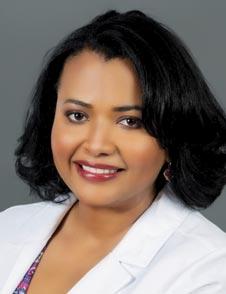
Andrine Grant, MD
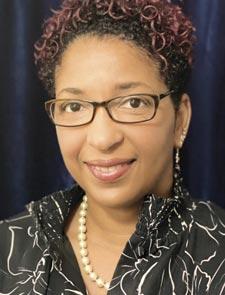

Health Texas Medical Group
Constanza “Julie” Gutierrez, MD South Texas Radiology Group
Allyson Harroff, MD Texas Oncology

Tricia Hilliard, MD Little Spurs Pediatrics Urgent Care
Vidhya Illuri, MD


University Medicine Associates (UMA)
Chris Kean, COO 2022 Practice Manager of the Year The SA Orthopedic Group (TSAOG)






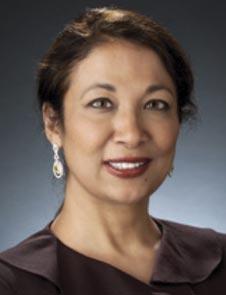
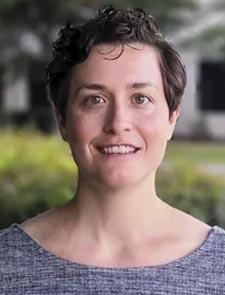
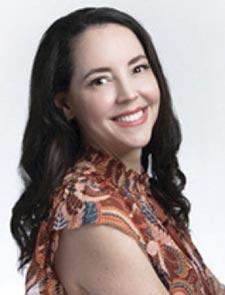 Rebecca Kelso, MD
Rebecca Kelso, MD
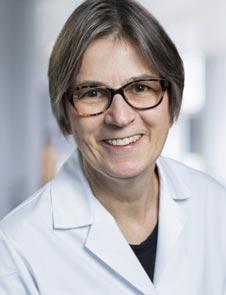





Richel Avery, MD
Interim Medical Director, UT Health Verde Hills Assistant Professor/Clinical UT Health SA Primary Care Center
Shweta Bansal, MD Professor, UT Health SA Medicine Department Division of Nephrology

Jessica Blower, MD Medical Director, UT Health Westover Hills Assistant Professor/Clinical UT Health SA Primary Care Center
Cynthia Cantu, MD
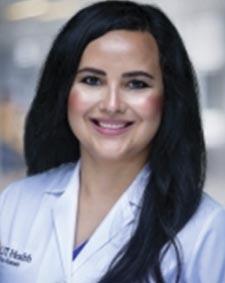
Medical Director, UT Health De Zavala
Assistant Professor/Clinical UT Health SA Primary Care Center Division of General Internal Medicine
Sara E. Espinoza, MD
Professor, UT Health SA Medicine Department Division of Geriatrics, Gerontology and Palliative Medicine
Jeannie Harden, MD
Medical Director of Reeves Inpatient Rehab Unit and Pediatric Rehabilitation Vice Chair of Clinical Operations for the Department of Rehabilitation Medicine Assistant Professor/ Clinical for UT Health SA Rehabilitation Medicine
Sarah K. Horn, MD
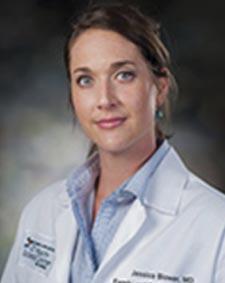

Assistant Professor/Clinical UT Health SA Neurology Department
Elena Jimenez-Gutierrez, MD

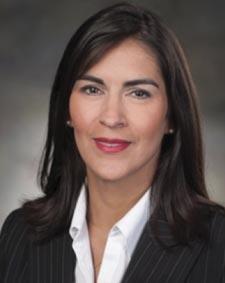
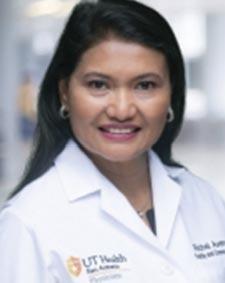
Medical Director, San Antonio Refugee Health Clinic; Co-Director, New Health Equity Track for Internal Medicine Residents; Assistant Professor/ Clinical for UT Health SA Medicine Department, Division of Hospital Medicine

Marsha C. Kinney, MD

Professor and Chair
UT Health SA
Pathology and Laboratory Medicine Department
Cordelia Moscrip, MD
Medical Director, UT Health Medical Drive
Assistant Professor/Clinical UT Health SA Primary Care Center
Mayra Perez, DO Assistant Professor/Clinical UT Health SA Primary Care Center

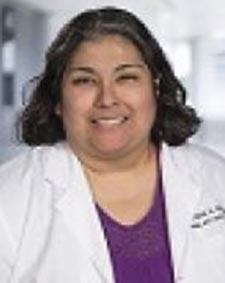
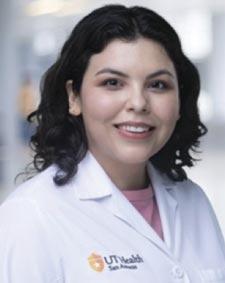
Ambili Ramachandran, MD
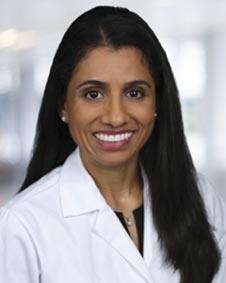
Chief (Interim) Division of General Medicine
Assistant Professor/Clinical UT Health SA Medicine Department Division of General Internal Medicine
Arlene Reyes, MD
Assistant Professor/Clinical
UT Health SA Primary Care Center
Sudha Seshadri, MD
Founding Director of the Glenn Biggs Institute for Alzheimer’s and Neurodegenerative Diseases and of the NIA Designated Alzheimer Disease Research Center Professor, UT Health SA Neurology Department
Chandana Tripathy, MD Medical Director, UT Health MARC Primary Care Associate Professor/Clinical UT Health SA Primary Care Center Division of General Internal Medicine

Tanya T. Van, MD

Section Chief, Breast Imaging, and Intervention Associate Professor/Clinical UT Health SA Radiology Department
Professor and Chair
UT Health SA Rehabilitation Medicine Department
Sandhya Vinu-Nair, MD
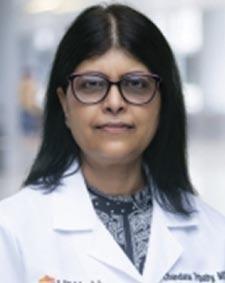
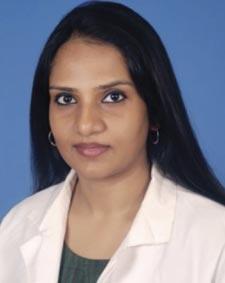
Director of Emergency Radiology at University Hospital Program Director of ER Radiology Fellowship
Associate Professor UT Health SA Radiology Department
Joyce Yuen, MD

Medical Director, UT Health Shavano Assistant Professor/Clinical UT Health SA Primary Care Center
Emily S. Wang, MD
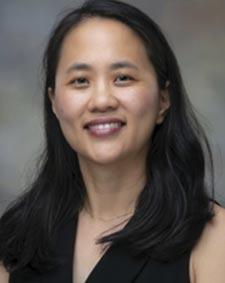

Associate Professor/Clinical UT Health SA Medicine Depart ment
Division of Hospital Medicine
On October 1, 2022, the Bexar County Medical Society (BCMS) participated in the 29th Annual San Fernando Health and Safety Fair. The Health and Safety Fair offered free medical screenings, consultations, immuniza tions and health information to hundreds of our San Antonio community members. This community effort is supported by local busi nesses and non-profit organizations like BCMS. There were over 300 community and medical volunteers with varying backgrounds working the fair. Among those were BCMS physicians, medical students, physician fami lies and BCMS staff.

BCMS has participated in the San Fernando Health and Safety Fair before, but this year was different. We had more volunteers and stood out with our brand-new items purchased with the Texas Medical Association Foundation “Vaccines Defend What Matters” grant. BCMS has a commitment to community serv ice through our “Ask a Doctor” program and has participated in many fairs and events
throughout our years of service. The difference has been the emphasis on COVID-19 vaccina tion hesitancy and the number of community members visiting our booth.
The 2022 goal for our “Ask a Doctor” pro gram is to use the experience, capacity and goodwill of the physician members of BCMS to disseminate information on the importance of being vaccinated to fight the COVID-19 variants through public events and outreach. We have found that partnering with San An tonio Metropolitan Health District (Metro Health) during fairs and events our physicians are able to address vaccination hesitancy and get some people vaccinated on the spot.
During the San Fernando Health and Safety Fair, BCMS was strategically placed next to the Metro Health vaccination clinic. The BCMS “Ask a Doctor” volunteers sur veyed over 150 attendees and passed out goodie bags to include hand sanitizer, masks, band aids and literature on vaccination safety and guidelines on what booster(s) they should
“It was great to get out once again and pro vide the much-needed service to the community.”
-Dr. Adrine K. Grant“It was an honor to participate! BCMS made a difference by offering the community a means to access critical health resources, COVID vac cines, and health screening including blood pres sure and diabetes screening. BCMS physicians offered medical advice and wayfinding recom mendations in the healthcare system for individ uals with insurance and without. We were available for general medical questions and rec ommendations on how to access primary and secondary care, regardless of insurance access. It was enjoyable to be able to be a part of such a worthwhile endeavor, serving the San Antonio community, and our family looks forward to participating again!”
-Dr. Justin Williams, Greater San Antonio Emergency Physicians
get and when. Our physicians fielded many medical questions and were able to point at tendees to the correct place for care. If some one was not vaccinated, we answered questions regarding their hesitancy, gave them documentation on how safe the vaccines are, and at times escorted them to the Metro Health vaccination clinic for their COVID19 vaccine/booster. We also fielded questions and concerns regarding the influenza (flu) shot. Again, BCMS was strategically placed across from the Walgreens booth where they were administering flu shots to all ages. Metro Health successfully gave out approximately 237 COVID vaccines. Walgreens successfully gave out 135 flu shots.
BCMS physicians and medical students not only manned the “Ask a Doctor”, “Doc in Booth” and blood pressure room, but con tributed through the many health services

provided. Our BCMS physicians generously offered their time, medial skills and experi ence at the prostate, colorectal, dermatology, pulmonary, vascular, and eye exam areas of the health and safety fair. BCMS was also able to donate eight cases of surgical masks which were given to all volunteers, booths and attendees.
BCMS would like to thank all the physi cians, medical students, physician families and BCMS staff. All of our volunteers were truly happy to allocate time for this much needed community health and safety fair. It is a privi lege to be of service to others. BCMS is com mitted to community outreach events and looks forward to working with the Texas Med ical Association Division of Communications and Marketing to disseminate the most up to date information and documentation to our physicians and community.

“What a wonderful event! I worked with respiratory therapists and Dr. Carlos Orozco at the respiratory health tent. There we performed spirometry and oximetry on anyone who was interested in knowing their lung function and better understanding resources available in San Antonio to care for people with lung conditions such as asthma, chronic bronchitis, em physema, cystic fibrosis, and other lung conditions. It was a beautiful day made even more so by the crowd of people seeking health information in our main downtown square around San Fernando Cathedral.”
-Dr. John Seidenfeld, Co-Lead, Commu nity Engagement Partnerships (CEP) CIT, Associate Professor, Clinical and Applied Sci ence Education (CASE, University of the In carnate Word School of Osteopathic Medicine

“Thank you for the opportunity for us to par ticipate in the St. Fernando Health and Safety Fair. We thoroughly enjoyed the experience! BCMS has done a great job in ensuring our par ticipants got their questions answered and con cerns addressed at booths staffed by medical professionals. As a physician, I feel empowered to be able to make a difference to our community outside our immediate practice environment. Thank you!”
-Dr. Qingxuan “Wendy” Wu, Alamo Neu rology Consultants
“The 29th Annual San Fernando Health and Safety Fair was an extremely successful event, re turning to the Cathedral and Main Plaza after a two-year hiatus due to the pandemic. This event is so vital to the underserved community, as in the worse cases represents the only access to free or less costly health screenings for many at risk persons. San Antonio health care workers ranging from high school students to retired cli nicians volunteered a Saturday morning to offer health screenings along with interpretations and referrals to appropriate care. Multiple cus tomized, spontaneous in person health coaching sessions were conducted at the BCMS “Ask the Doctor” table, the “Doctor In Booth” sponsored by the San Fernando Heath Fair Steering Com mittee, and other health screenings offered.”
-Dr. John Nava, BCMS President-elect
For more information about upcoming health and safety fairs in Bexar County and surrounding areas, visit our website at http://www.bcms.org/CommEvents.php or call Monica Jones, COO at (210) 301-4373.




The Bexar County Medical Society (BCMS) Circle of Friends (COF) program was started more than 25 years ago to help support our physician membership. The COF program is a part of our nonprofit 501(c)3 and it consists of businesses that donate monies to participate in the program at differ ent levels. The essential benefits derived are ad ditional non dues revenue to assist BCMS in providing member benefits to you and help keep the cost of dues down. Likewise, our COF program is dependent on business gen erated by physician members using our spon sors’ products and services. It is important to BCMS that our members support the busi nesses participating in the COF program and its initiatives.

As mentioned, physician members are en couraged to use the COF businesses at every opportunity and take advantage of the many products and services they offer for your prac tice and personal use. Some points of interest listed here:
Internally, Bexar County Medical Society makes every effort to use the Circle of Friends business sponsors in preference to other out side companies. By using Circle of Friends products and services we are able to save money and encourage the business commu nity to participate with and support BCMS.
The Circle of Friends sponsors are conve niently listed on the BCMS website under BCMS Vendor Directory and as a monthly listing in San Antonio Medicine magazine.
As a BCMS member you can find exclusive
discounts on premium products and services that you and your practice use every day.
All Circle of Friends sponsors have been re viewed through the Better Business Bureau, broker check (if applicable) and an online business review and search. Why put your trust in outside or off-the-web companies that you know nothing about? COF sponsors are supporters of BCMS through the COF pro gram. It makes sense to use a trusted company that gives back.
The COF Program is a wonderful benefit and source of support to the BCMS. Let’s keep this program alive by giving them your patronage.
August Charles Trevino, Director of Development at Bexar County Med ical Society.
For questions regarding the Circle of Friends program he can be reached at 210-302-4366 and email august.trevino@bcms.org

Walter Isaacson, biographer of Benjamin Franklin, Albert Einstein, Steve Jobs and Leonardo da Vinci, undertakes his greatest challenge yet in The Code Breaker: Jennifer Doudna, Gene Editing, and the Future of the Human Race – but it is not strictly a biography.

Jennifer Doudna’s life story does provide the through line of this epic tale: it begins with her leading colleagues in vaccine research on an empty Berkeley campus in March, 2020, recognizing that “the government was fum bling its response to COVID, so it was time for professors and graduate students to rush into the breach.”
Concluding the book, Nobel Laureate Doudna is again leading her academic peers in offering their COVID vaccine discoveries to anyone fighting the virus, without arcane li censing agreements. But the 470 pages in be tween take the reader down a rabbit hole of modern science meeting modern business and patent law. And the true protagonist of “The Code Breaker” is revealed to be a mysterious character called CRISPR.
CRISPR, for the uninitiated (like me), is the biomolecular phenomenon that provides bacteria an adaptive immune systems, protect ing them from viruses, even as the viruses evolve. These repeated sequences of code in bacterial RNA turn out to hold the magic key to re-engineering DNA, with all the promise and horror that portends.
The story of their discovery and use, has as many twists and turns as the double helix it self, for Isaacson’s net is thrown wide to en compass all aspects of the “third great revolution of modern times.” He defines these three explosions of knowledge as deriving
from the discoveries the “the atom, the bit and the gene.”
The first, nuclear physics, was driven by Einstein’s revelations of relativity and quantum the ory, shaping the first half of the 20th Century. The second rev olution, information technol ogy, began with the transistor in 1950 and continues unfold ing today.
We have now entered the third, the life-sciences revo lution, where “children who study digital coding will be joined by those who study ge netic code.”
The manner in which these three intertwine and their effect on scientific methodology it self turns Isaacson’s work from a straightfor ward, biographical narrative into an intricate weave of research, discovery, industry, eco nomics, ethics and law. Beginning with Charles Darwin, Gregor Mendel, Thomas Malthus, James Watson and Francis Crick, the author gives a whirlwind tour leading to state of the art knowledge of DNA and RNA and how their structures permit nucleotide bonds to define its role and effect. As IT advances joined DNA understandings, the race to se quence culminated in 1990s Human Genome Project. “The flow of history is accelerated when two rivers converge,” says Isaacson.
However, “Having a map of DNA did not, it turned out, lead to most of the grand med ical breakthroughs that had been predicted. More than four thousand disease-causing DNA mutations were found. But no cure sprang forth for even the most simple of sin
gle-gene disorders,” the author concludes.
Instead of focusing on DNA, the key was found in its less vaunted cousin, RNA (ri bonucleic acid), “DNA doesn’t do much work,” Isaacson explains, “it mainly stays at home in the nucleus protecting its informa tion and occasionally replicating itself.”
RNA doesn’t just curate information; it car ries out a broad range of functions, from trans lating genetic information into the molecular machines and structures of the cell to regulat ing the activity of genes during development.
“Doudna’s study of RNA structure led her to a field that would become unexpectedly rel evant later in her career: viruses. Specifically, she was interested in how the RNA in some viruses, such as coronaviruses, allows them to hijack the protein-making machinery of cells.”
The story refocuses on bacteria, specifi cally the study of bacteria and archaea (sin gle-cell organisms without nucleus) existing in harsh environments, like supersaturated salt ponds. Graduate student Francisco Mo jica was sequencing the DNA of such a bac terium when he discovered 14 identical sequences repeated at regular intervals …
four years after a student at Osaka University discovered the same phenomenon, sequenc ing E. coli bacteria. These repeated se quences, which read identically backward and forward, were interspaced in specific pat terns. Thus, “CRISPR,” for “clustered regu larly interspaced short palindromic repeats.”
By 2003, when Mojica focused on figuring out the role CRISPRs played, the genomes of close to two hundred bacteria had been sequenced (as well as those of humans and mice). The “spacers”… the regions of normal looking DNA segments nestled in between repeated CRISPR segments … drove his cu riosity when he realized the spacer segments matched sequences in viruses that attacked E. coli.
It was a true “Eureka!” moment: “I just dis covered something really amazing,” he said to his wife. “Bacteria have an immune system.
They’re able to remember what viruses have at tacked them in the past.”
How CRISPR’s virus immunity was vali dated by records of yogurt production offers a rare lighter moment in the narrative, but as soon as the new technology demonstrated sig nificant industrial value, the story takes a turn from a science techno-thriller to a business be trayal worthy of TVs “Dallas.” The cutthroat world of venture capitalists, patent pirates and legal sharks combine to make researching DNA’s structure simple in comparison.
In the end, Isaacson’s most recent work is as enlightening and educating as any of his biog raphies, but diffuses focus on the principal characters, their passions and their heroic ef forts in detailing how a Zoom-connected, 24hour world-wide laboratory changes expectations of scientific research. Inevitable, perhaps, in an era when laboratory accom
plishments are pre-committed to industry for monetization - a world that neither DaVinci nor Franklin would have to have faced.
All quotes from The Code Breakers (Simon & Schuster, 2021). Its review was suggested by a reader and the book is available from San Antonio Public Library in both Kindle and Audiobook editions, as are all the materials re viewed in this column. Suggestions welcome!
David Alex Schulz, CHP is a com munity member of the BCMS Publi cations Committee.


We encourage you to use our supporting vendors when ever supplies or services are needed by you or your practice.
Synergy Federal Credit Union (HH Silver Sponsor)
Sol Schwartz & Associates is the premier accounting firm for San Antonio-area medical practices and specializes in helping physi cians and their management teams maximize their financial ef fectiveness.
Jim Rice, CPA 210-384-8000, ext. 112 jprice@ssacpa.com www.ssacpa.com “Dedicated to working with physicians and physician groups.”
Bertuzzi-Torres-Fernandez Wealth Management Group (HHH Gold Sponsor)
We specialize in simplifying your personal and professional life. We are dedicated wealth managers who offer diverse financial solutions for discerning healthcare professionals, including asset protection, lending and estate planning.
Mike Bertuzzi
First Vice President Senior Financial Advisor 210-278-3828
Michael_bertuzzi@ml.com
Looking for low loan rates for mort gages and vehicles? We've got them for you. We provide a full suite of digital and traditional fi nancial products, designed to help Physicians get the banking serv ices they need.
Synergy FCU Member Services 210-750-8333 info@synergyfcu.org www.synergyfcu.org
“Once a member, always a member. Join today!”
(210) 503-0003 kevin@genicslabs.com Artyom Vardapetyan Managing Partner (210) 503-0003 www.genicslabs.com “Accurate results in record time.”
Bexar Credentials Verification, Inc. (HHHH 10K Platinum Sponsor)

With over 29 years’ experience, we understand that real-time visi bility into your financial data is critical. Our browser-based healthcare accounting solutions provide accurate, multi-dimen sional reporting that helps you accommodate further growth and drive your practice forward.
Rana Camargo Senior Account Manager 210-771-7903 ranac@expressinfo.com www.expressinfo.com “Leaders in Healthcare Software & Consulting”

At Kreager Mitchell, our healthcare practice works with physicians to offer the best representation pos sible in providing industry specific solutions. From business transac tions to physician contracts, our team can help you in making the right decision for your practice.
Michael L. Kreager 210-283-6227 mkreager@kreagermitchell.com
Bruce M. Mitchell 210-283-6228
bmitchell@kreagermitchell.com www.kreagermitchell.com
“Client-centered legal counsel with integrity and inspired solutions”
Ruth Torres Financial Advisor 210-278-3828 Ruth.torres@ml.com http://fa.ml.com/bertuzzi-torres Will C. Fernandez, CEPA
Senior Portfolio Advisor Financial Advisor 210-278-3812 wfernandez@ml.com https://fa.ml.com/texas/san-an tonio/bertuzzi-torres-fernandez
BANKING Broadway Bank (HHH Gold Sponsor)

Healthcare banking experts with a private banking team committed to supporting the medical community.
Thomas M. Duran
SVP, Private Banking Team Lead 210-283-6640
TDuran@Broadway.Bank www.broadwaybank.com
“We’re here for good.”
The Bank of San Antonio (HHH Gold Sponsor)

We specialize in insurance and banking products for physician groups and individual physicians.

Our local insurance professionals are some of the few agents in the state who specialize in medical malpractice and all lines of insur ance for the medical community.
Brandi Vitier 210-807-5581
brandi.vitier@thebankofsa.com www.thebankofsa.com
Livingston Med Lab (HHHH 10K Platinum Sponsor)

High Complexity Clia/Cola accred ited Laboratory providing White Glove Customer Service. We offer a Full Diagnostic Test Menu in the fields of Hematology, Chemistry, Endocrinology, Toxicology, Infec tious Disease, & Genetics.
Robert Castaneda (CEO) 210-316-1792
Robert@livingstonmedlab.com
Sean Villasana (Chief Scientific Officer, CSO) 210-237-8557
Sean@livingstonmedlab.com Joey Martinez (Director of Operations) 210-204-7072
Joey@livingstonmedlab.com
Dwight Chapman (Account Manager) 210-591-2649
Dwight@livingstonmedlab.com www.livingstonmedlab.com/home “Trusted Innovative, Accurate, and STAT Medical Diagnostics”
Genics Laboratories (HHH Gold Sponsor)

Genics Laboratories offers accu rate, comprehensive and reliable results to our partners and pa tients. Genics Laboratories is committed to continuous re search, ensuring our protocols are always at the peak of current technology.
Yulia Leontieva
Managing Partner, Physician Liai son (210) 503-0003 (Phone) yulia@genicslabs.com (Email)
Kevin Setanyan Managing Partner
Bexar Credentials Verification Inc. provides primary source verification of credentials data that meets The Joint Commission (TJC) and the Na tional Committee for Quality Assur ance (NCQA) standards for health care entities.

Betty Fernandez Director of Operations 210-582-6355
Betty.Fernandez@bexarcv.com www.BexarCV.com
“Proudly serving the medical com munity since 1998”
Oakwell Private Wealth Management (HHHH 10K Platinum Sponsor)
Oakwell Private Wealth Manage ment is an independent financial advisory firm with a proven track record of providing tailored finan cial planning and wealth manage ment services to those within the medical community.
Brian T. Boswell, CFP®, QKA Senior Private Wealth Advisor 512-649-8113
SERVICE@OAKWELLPWM.COM www.oakwellpwm.com
“More Than Just Your Advisor, We're Your Wealth Management Partner”
Elizabeth Olney with Edward Jones (HH Silver Sponsor)
We learn your individual needs so we can develop a strategy to help you achieve your financial goals.
Join the nearly 7 million investors who know. Contact me to develop an investment strategy that makes sense for you.
Elizabeth Olney, Financial Advisor 210-858-5880
Elizabeth.olney@edwardjones.com www.edwardjones.com/elizabeth-olney "Making Sense of Investing"
Denise C. Smith
Vice President | Private Banking 210-343-4502
Denise.C.Smith@amegybank.com www.amegybank.com
Bertuzzi-Torres-Fernandez
Wealth Management Group
( Gold Sponsor)
We specialize in simplifying your personal and professional life. We are dedicated wealth managers who offer diverse financial solu tions for discerning healthcare professionals, including asset pro tection, lending & estate planning.
Mike Bertuzzi
First Vice President Senior Financial Advisor 210-278-3828
Michael_bertuzzi@ml.com
Ruth Torres Financial Advisor 210-278-3828 Ruth.torres@ml.com
Will C. Fernandez, CEPA
Senior Portfolio Advisor Financial Advisor
210-278-3812
wfernandez@ml.com https://fa.ml.com/texas/san-an tonio/bertuzzi-torres-fernandez
“Community banking partnership”

(HHH Gold Sponsor)
coordinated care.
Jon Buss: 512-338-6167
Jbuss1@humana.com
Shamayne Kotfas: 512-338-6103 skotfas@humana.com www.humana.com
Aspect Wealth Management (HHH Gold Sponsor)

We believe wealth is more than money, which is why we improve and simplify the lives of our clients, granting them greater satisfaction, confidence and freedom to achieve more in life.
Michael Clark, President 210-268-1520
mclark@aspectwealth.com www.aspectwealth.com
“Get what you deserve … maximize your Social Security benefit!”
Amegy Bank of Texas (HH Silver Sponsor)
We believe that any great relationship starts with five core values: Attention, Accountability, Appreciation, Adaptability and Attainability. We work hard and together with our clients to accomplish great things.
Jeanne Bennett
EVP | Private Banking Manager 210-343-4556
Jeanne.bennett@amegybank.com
Karen Leckie
Senior Vice President | Private Banking 210-343-4558
karen.leckie@amegybank.com
Robert Lindley
Senior Vice President | Private Banking 210-343-4526

robert.lindley@amegybank.com
Nexus Neurorecovery Center (HHH Gold Sponsor)

A post-acute rehabilitation facility focusing on brain injuries. Pro gramming provides individual and group physical, occupational, cog nitive, and speech therapy. We help residents return to lives of productivity and meaning.
Sydney Kerr Liaison 346-339-2654
skerr@nhsltd.com
Caitlyn Tewksbury ctewksbury@nhsltd.com
Justin Sanderson CEO 210-854-4732
jsanderson@nhsltd.com
Nexus Neurorecovery Center 227 Lewis St, San Antonio, TX 78212
https://nexushealthsystems.com
“To return patients to lives of pro ductivity and meaning”
With over 29 years’ experience, we understand that real-time visi bility into your financial data is critical. Our browser-based healthcare accounting solutions provide accurate, multi-dimen sional reporting that helps you accommodate further growth and drive your practice forward.
Rana Camargo Senior Account Manager 210-771-7903 ranac@expressinfo.com www.expressinfo.com “Leaders in Healthcare Software & Consulting”
TMA Insurance Trust (HHHH 10K Platinum Sponsor)

Texas Medical Liability Trust (HHHH 10K Platinum Sponsor)

With more than 20,000 health care professionals in its care, Texas Medical Liability Trust (TMLT) pro vides malpractice insurance and related products to physicians. Our purpose is to make a positive im pact on the quality of health care for patients by educating, protect ing, and defending physicians.
Patty Spann
512-425-5932
patty-spann@tmlt.org www.tmlt.org
Recommended partner of the Bexar County Medical Society
UT Health San Antonio MD Anderson Cancer Center, (HHH Gold Sponsor)
UT Health Physicians, the faculty practice of UT Health San Anto nio, provides our region with the most comprehensive care through expert, compassionate providers treating patients in more than 140 medical specialties at locations throughout San Anto nio and the Hill Country.

UT Health San Antonio Physicians Regina Delgado Business Development Manager (210) 450-3713
delgador4@uthscsa.edu
UT Health San Antonio MD Anderson Mays Cancer Center Laura Kouba Business Development Manager (210) 265-7662
norriskouba@uthscsa.edu Cancer.uthscsa.edu
Appointments: 210-450-1000
UT Health San Antonio MD Ander son Cancer Center 7979 Wurzbach Road San Antonio, TX 78229
TMA Insurance Trust is a full-service insurance agency offering a full line of products – some with exclusive member discounts and staffed by professional advisors with years of experience. Call today for a compli mentary insurance review. It will be our privilege to serve you. Wendell England Director of Member Benefits 512-370-1776 wendell.england@tmait.org 800-880-8181 www.tmait.org
“We offer BCMS members a free insurance portfolio review.”
The Bank of San Antonio Insurance Group, Inc. (HHH Gold Sponsor)

We specialize in insurance and banking products for physician groups and individual physicians. Our local insurance professionals are some of the few agents in the state who specialize in medical malpractice and all lines of insur ance for the medical community.
Katy Brooks, CIC 210-807-5593
katy.brooks@bosainsurance.com www.thebankofsa.com “Serving the medical community.”
Guardian (★★★ Gold Sponsor)

Live Confidently. Every financial dream deserves a well-crafted plan.
Ned Hodge 210-332-3757 ned@nedhodge.com www.nedhodge.com | www.Opesone.com
“Take care of today then plan for tomorrow”
Humana (HHH Gold Sponsor)
Humana is a leading health and well-being company focused on making it easy for people to achieve their best health with clinical excellence through
MedPro Group (HH Silver Sponsor)
Rated A++ by A.M. Best, MedPro Group has been offering customized insurance, claims and risk solutions to the healthcare community since 1899. Visit MedPro to learn more.
Kirsten Baze
512-658-0262
Kirsten.Baze@medpro.com www.medpro.com
ProAssurance (HH Silver Sponsor)
ProAssurance professional liability insurance defends healthcare providers facing malpractice claims and provides fair treatment for our insureds. ProAssurance Group’s rating is AM Best A (Excellent).
Mike Rosenthal
Senior Vice President,
Visit
Business Development 800-282-6242
MikeRosenthal@ProAssurance.com www.ProAssurance.com
of medical supplies, equipment, vaccines and pharmaceuticals serving office-based practitioners in 20 countries. Recognized as one of the world’s most ethical companies by Ethisphere.
Tom Rosol 210-413-8079 tom.rosol@henryschein.com www.henryschein.com “BCMS members receive GPO discounts of 15 to 50 percent.”
Saranraj (Raj) Venkatesh
Vice President – RCM | Sales and Client Relations 726-228-1097 saranraj@wavemt.com https://rcmwave.com/ “Innovation towards Solutions”
The Health Cell (HH Silver Sponsor)
Alamo Capital Advisors LLC (★★★★ 10K Platinum Sponsor)
Focused on sourcing, capitalizing, and executing investment and de velopment opportunities for our in vestment partners and providing thoughtful solutions to our advisory clients. Current projects include new developments, acquisitions & sales, lease representation and fi nancial restructuring (equity, debt, and partnership updates).
Jon Wiegand, Principal 210-241-2036
jw@alamocapitaladvisors.com www.alamocapitaladvisors.com
San Antonio Army Medical Recruiting office (★★Silver Sponsor)
Mission: Recruit highly qualified and motivated healthcare profes sionals for service in the Army Reserves or Active Duty Army, in support of Soldiers and their families.
1LT Thomas Alexandria 210-328-9022 Alexandria.n.thomas12.mil@army. mil
https://recruiting.army.mil/mrb/ “Service to Country, Army Medi cine, Experientia et Progressus”
“Our Focus is People” Our mis sion is to support the people who propel the healthcare and bio science industry in San Antonio. Industry, academia, military, nonprofit, R&D, healthcare delivery, professional services and more!
Kevin Barber, President 210-308-7907 (Direct) kbarber@bdo.com
Valerie Rogler, Program Coordinator 210-904-5404
Valerie@thehealthcell.org www.thehealthcell.org “Where San Antonio’s Healthcare Leaders Meet”
San Antonio Medical Group Man agement Association (SAMGMA) (HH Silver Sponsor)
chases and practice transitions. Brad Wilson Agent 210-573-6146 Brad.Wilson@carr.us www.carr.us “Maximize Your Profitability Through Real Estate”
Oakwell Private Wealth Management (HHHH 10K Platinum Sponsor)
Oakwell Private Wealth Manage ment is an independent financial advisory firm with a proven track record of providing tailored finan cial planning and wealth manage ment services to those within the medical community.
Brian T. Boswell, CFP®, QKA
Senior Private Wealth Advisor 512-649-8113
SERVICE@OAKWELLPWM.COM www.oakwellpwm.com “More Than Just Your Advisor, We're Your Wealth Management Partner”
Wave Online (★★★ Gold Sponsor)
Our team of professionals will act as your extended AR office en hancing your revenue through our proprietary metrics and claim management systems. In addition, you keep 100% control of your RCM. Contact us today for a no cost evaluation.
Saranraj (Raj) Venkatesh
Vice President – RCM | Sales and Client Relations 726-228-1097
saranraj@wavemt.com https://rcmwave.com/ “Innovation towards Solutions”
Commercial & Medical Credit Services (HH Silver Sponsor)
A bonded and fully insured San Antonio-based collection agency. Henry Miranda 210-340-9515
hcmiranda@sbcglobal.net www.cmcs-sa.com
“Make us the solution for your account receivables.”
Henry Schein Medical (HH Silver Sponsor)

From alcohol pads and bandages to EKGs and ultrasounds, we are the largest worldwide distributor
iGenomeDx ( Gold Sponsor)

Most trusted molecular testing laboratory in San Antonio provid ing FAST, ACCURATE and COM PREHENSIVE precision diagnostics for Genetics and Infectious Diseases.
Dr. Niti Vanee Co-founder & CEO 210-257-6973 nvanee@iGenomeDx.com
Dr. Pramod Mishra Co-founder, COO & CSO 210-381-3829 pmishra@iGenomeDx.com www.iGenomeDx.com
“My DNA My Medicine, Pharma cogenomics”
SAMGMA is a professional nonprofit association with a mission to provide educational programs and networking opportunities to medical practice managers and support charitable fundraising. Lindsey Herman Nolan, MHR, CMPE, President info4@samgma.org www.samgma.org
Favorite Healthcare Staffing (HHHH 10K Platinum Sponsor)
Serving the Texas healthcare commu nity since 1981, Favorite Healthcare Staffing is proud to be the exclusive provider of staffing services for the BCMS. In addition to traditional staffing solutions, Favorite offers a comprehensive range of staffing services to help members improve cost control, increase efficiency and protect their revenue cycle.
Alamo Capital Advisors LLC (★★★★ 10K Platinum Sponsor)


Focused on sourcing, capitalizing, and executing investment and de velopment opportunities for our in vestment partners and providing thoughtful solutions to our advisory clients. Current projects include new developments, acquisitions & sales, lease representation and fi nancial restructuring (equity, debt, and partnership updates).
Cindy M. VidrineDirector of Operations- Texas 210-918-8737
cvidrine@favoritestaffing.com “Favorite Healthcare Staffing offers preferred pricing for BCMS members.”
San Antonio Army Medical Recruiting office (HH Silver Sponsor)
Wave Online (★★★ Gold Sponsor)


Our team of professionals will act as your extended AR office en hancing your revenue through our proprietary metrics and claim management systems. In addition, you keep 100% control of your RCM. Contact us today for a no cost evaluation.
Jon Wiegand, Principal 210-241-2036 jw@alamocapitaladvisors.com www.alamocapitaladvisors.com
CARR Realty (HH Silver Sponsor)
CARR is a leading provider of commercial real estate for tenants and buyers. Our team of health care real estate experts assist with start-ups, renewals, reloca tions, additional offices, pur
Mission: Recruit highly qualified and motivated healthcare professionals for service in the Army Reserves or Active Duty Army, in support of Sol diers and their families.
1LT Thomas Alexandria 210-328-9022
Alexandria.n.thomas12.mil@army.mil https://recruiting.army.mil/mrb/ “Service to Country, Army Medicine, Experientia et Progressus”






 By Stephen Schutz, MD
By Stephen Schutz, MD
The Audi Q3 is a small luxury crossover vehicle that competes with the BMW X1, Mercedes GLA, and Lexus NX. While the Q3 is small, it’s a lot bigger than it used to be, which is a good thing because now Audi’s smallest SUV is a more logical purchase in this competitive market niche.
How small was the previous (first generation) Q3? It was so small that sitting in the rear seats was comical for anyone taller than 5’9” or so. I’m 6’2” and I had to tilt my head to one side uncomfortably when I tried out the rear seats. Luggage space was minimal too.
The prior Q3 looked good though. It was a classic “outside-in” de sign job where stylists created an attractive shape and the engineers had to make do with the resulting diminutive interior. And not only was it better looking than its competitors back then, but it also looks better than its successor.
Which isn’t ugly, by the way. Boxy with all of the Audi styling ele ments that we’ve come to know and (mostly) love, the Mk2 Q3 is best described as a 3/4 size Q5 with some modest alterations.
That should come as no surprise as the Q5 is Audi’s best-selling ve hicle, and it continues to sell strongly despite being almost completely unchanged since it launched way back in 2009. If I were in charge of Audi, I’d make the Q3 look like the Q5 too.
While more spacious than the previous model, especially in the back seat where I’m now able to sit normally, the new Q3’s interior is still relatively small. Luggage space behind the rear seats is 24ft3 with the rear seats up and 48ft3 with them folded down (for the record the prior Q3 had just 17ft3 of luggage space behind the rear seats).
Realistically, if size were the only thing that mattered, then the $38,000 base price Audi Q3 wouldn’t sell any copies at all. But size isn’t the only relevant thing in this market.
In fact, for most customers it’s all about the luxury experience. With that reality in mind, the cabin of all Audis is very nice, and that’s the case with the Q3. All of the materials that you see and touch are of higher quality than a similarly priced (and probably larger) vehicle from a mainstream manufacturer, and the gauges and controls are also better. When you sit behind the wheel of an Audi (BMW, Mercedes or Lexus) there’s a premium feel that makes the extra money you pay worth it. And typically, you’re treated better at the dealership too. Isn’t that type of experience one of the reasons (or the reason) we work so hard as physicians? It is for me.
Anyway, driving the Q3 is pleasant but not exciting. Since the Q3 sits on the same platform as the VW Golf, everything is geared for a middle of the road driving experience not athleticism. Its sweet spot is zipping around town running errands or commuting, but B-roads are also handled well. Interstate driving is just Ok with the Q3; it’s not
like it falls apart there, but the open road isn’t where the Q3 really wants to be.
Quattro All-wheel drive, an 8-speed automatic transmission, and a 2.0L turbocharged four-cylinder engine are standard on every Q3. Nevertheless, two versions of that 2.0L engine are available: the base 40 model puts out 184HP, while the higher-spec 45 is good for 228HP.
The Q3’s fuel economy figures are 23 MPG City and 30 MPG Highway for the 40, and 21 City and 28 Highway for the Q3 45.
Tech-wise, Audi equips most Q3 models with an 8.8-inch touch screen MMI infotainment system that features Apple CarPlay and An droid Auto. A larger 10.1-inch touchscreen is also available as an option, which is what I would select. SiriusXM satellite radio, wireless charging, a 15-speaker and a 680-watt Sonos stereo system are also available as options.
As always with German cars, options and option packages can get complicated and expensive. The smart thing to do is keep a lid on ex tras and work with BCMS’ Phil Hornbeak to get your best deal.
The 2022 Audi Q3 is a compact luxury SUV that compares favor ably with the BMW X1, Mercedes GLA and Lexus NX. It is certainly small, but if luxury is more important to you than size, then it merits a close look.

As always, call Phil Hornbeak, the Auto Program Manager at BCMS (210-301-4367), for your best deal on any new car or truck brand. Phil can also connect you to preferred financing and lease rates.
Stephen Schutz, MD, is a board-certified gastroenterologist who lived in San Antonio in the 1990s when he was stationed here in the US Air Force. He has been writing auto reviews for San Antonio Medicine since 1995.

11911 IH 10 West San Antonio, TX 78230
Coby Allen 210-696-2232
Audi Dominion 21105 West IH 10 San Antonio, TX 78257
Rick Cavender 210-681-3399

Northside Chevrolet 9400 San Pedro Ave. San Antonio, TX 78216
Charles Williams 210-912-5087
Chuck Nash Chevrolet Buick GMC 3209 North Interstate 35 San Marcos, TX
William Boyd 210-859-2719
Bluebonnet Chrysler Dodge Ram 547 S. Seguin Ave. New Braunfels, TX 78130
Matthew C. Fraser 830-606-3463
Northside Ford 12300 San Pedro San Antonio, TX
Marty Martinez 210-477-3472
Northside Honda 9100 San Pedro Ave. San Antonio, TX 78216
Paul Hopkins 210-988-9644
14610 IH 10 West San Marcos, TX 78249
Mark Hennigan 832-428-9507
Land Rover San Antonio 13660 IH 10 West San Antonio, TX
Cameron Tang 210-561-4900
North Park Lexus 611 Lockhill Selma San Antonio, TX
Tripp Bridges 210-308-8900
North Park Lexus at Dominion 25131 IH 10 W Dominion San Antonio, TX
James Cole 210-816-6000
North Park Lincoln 9207 San Pedro San Antonio, TX
Sandy Small 210-341-8841
North Park Mazda 9333 San Pedro San Antonio, TX 78216
John Kahlig 210-253-3300
Mercedes Benz of Boerne 31445 IH 10 West Boerne, TX
James Godkin 830-981-6000
Mercedes Benz of San Antonio 9600 San Pedro San Antonio, TX
Al Cavazos Jr. 210-366-9600
9455 IH 10 West San Antonio, TX 78230
Douglas Cox 210-764-6945
Kahlig Auto Group

North Park Subaru 9807 San Pedro San Antonio, TX 78216
Raymond Rangel 210-308-0200
North Park Subaru at Dominion 21415 IH 10 West San Antonio, TX 78257
Phil Larson 877-356-0476
Cavender Toyota 5730 NW Loop 410 San Antonio, TX
Gary Holdgraf 210-862-9769
North Park Toyota 10703 Southwest Loop 410 San Antonio, TX 78211
Justin Boone 210-635-5000
Kahlig Auto Group Kahlig Auto Group Kahlig Auto Group Kahlig Auto Group Kahlig Auto Group Kahlig Auto Group Kahlig Auto Group
